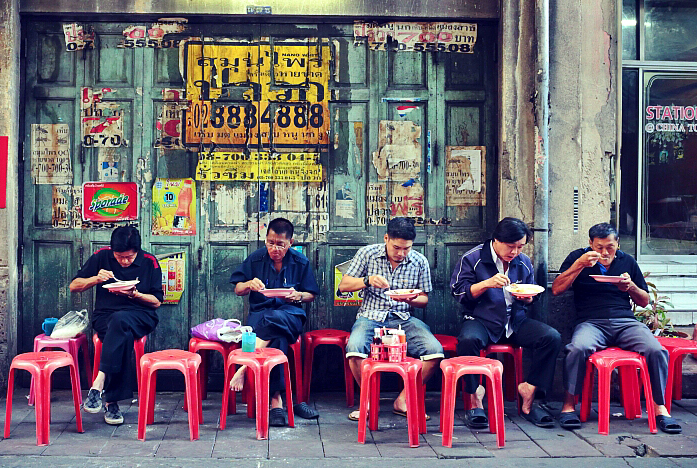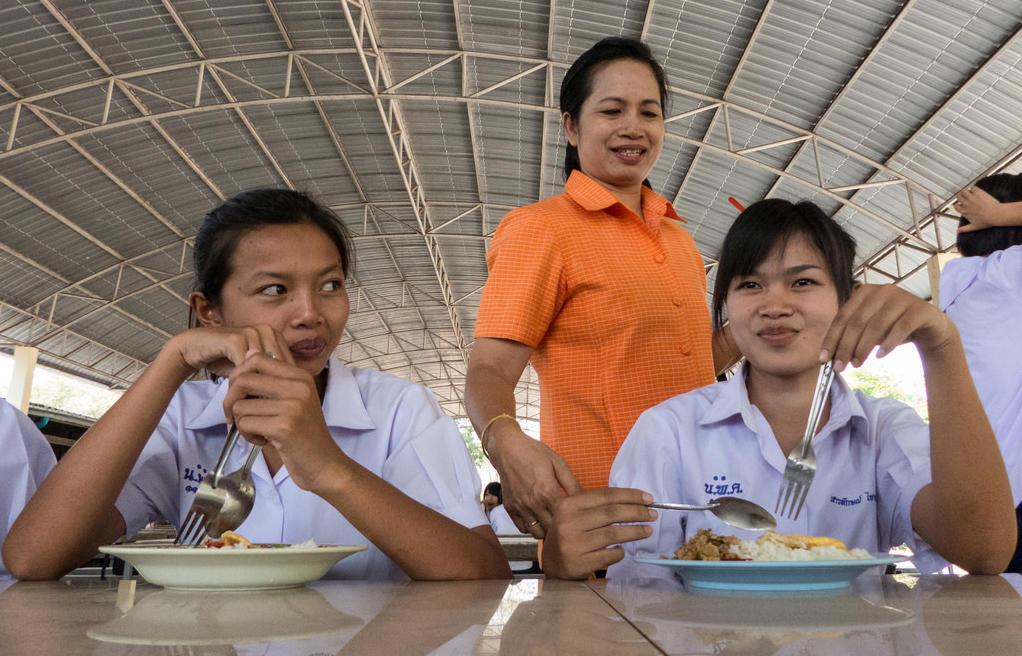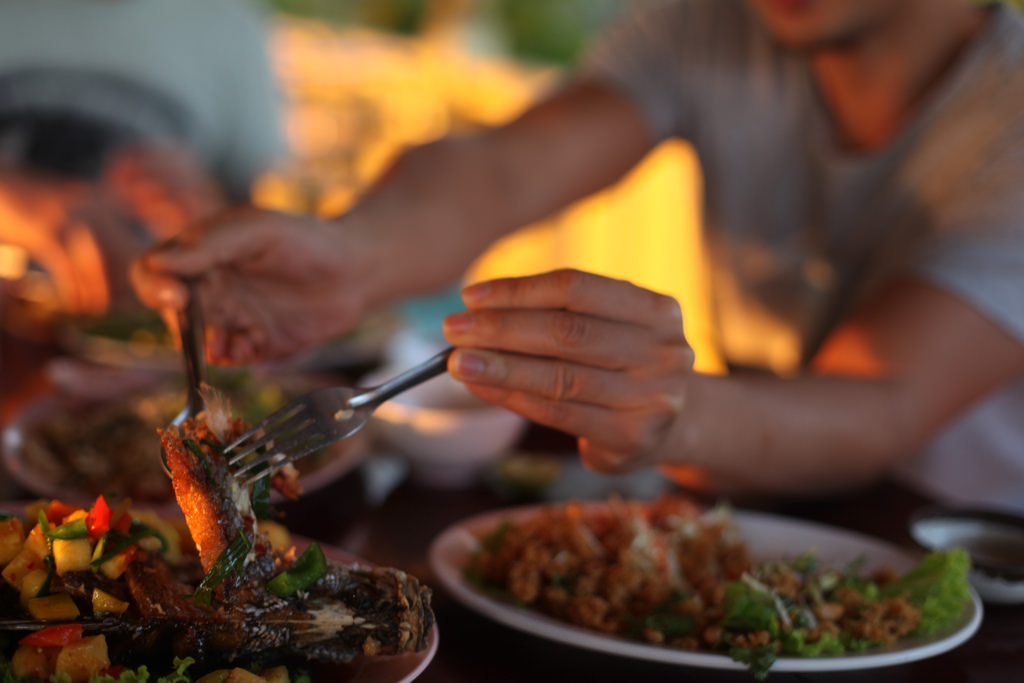Food and Drink: Dining Etiquette
Table Etiquette
Unlike many other countries in Southeast Asia, Thais do not use chopsticks. The table is set with a fork and a flat-bottomed spoon, the main utensil used for eating. The fork is only used in the left hand to push food onto the spoon. Eating directly with a fork is analogous to putting a knife in one’s mouth in European dining etiquette. Food is only eaten with the right hand.
At communal meals, each person is provided with a separate dish plated with an individual serving of rice and a soup bowl. Although several dishes are usually served at dinner, diners should limit themselves to small portions of a maximum of three different foods on their plate at one time. Thais eat following the principles of khluk—mixing distinct flavors from different dishes with rice. Diners take food first from the outside of the serving plate, working in toward the center. At the end of the meal, rice should not be left on the plate, as rice is considered sacred in Thailand and should not be wasted. Unlike other countries in East Asia, though, leaving a bit of food on one’s plate at the end of the meal does not indicate that one is still hungry or did not like the food.
Social Dimension of Dining
In Thailand, eating is a social activity. Young children are not placed in high chairs, but are fed on a female family member’s lap until they reach school age.
When dining with a group, the food is served family style, meaning that dishes are brought to the table to be shared. Before the meal begins, the youngest person at the table serves rice to the others. Out of respect for the other diners present, Thais spoon just enough from each dish for one or two bites, refilling as desired. Dishes may be served on a khan tok, a low woven tray placed on the table.
Guests who are invited to a meal at a restaurant or private home are not expected to order for themselves. Instead, the host or the senior woman orders dishes for the entire group, to be shared communally. For meals with business associates, it is customary to wait to discuss business after the meal is finished. Meals are eaten slowly and leisurely, with plenty of time for conversation.
Article written for World Trade Press by Hope Kang.
Copyright © 1993—2025 World Trade Press. All rights reserved.

 Thailand
Thailand 


